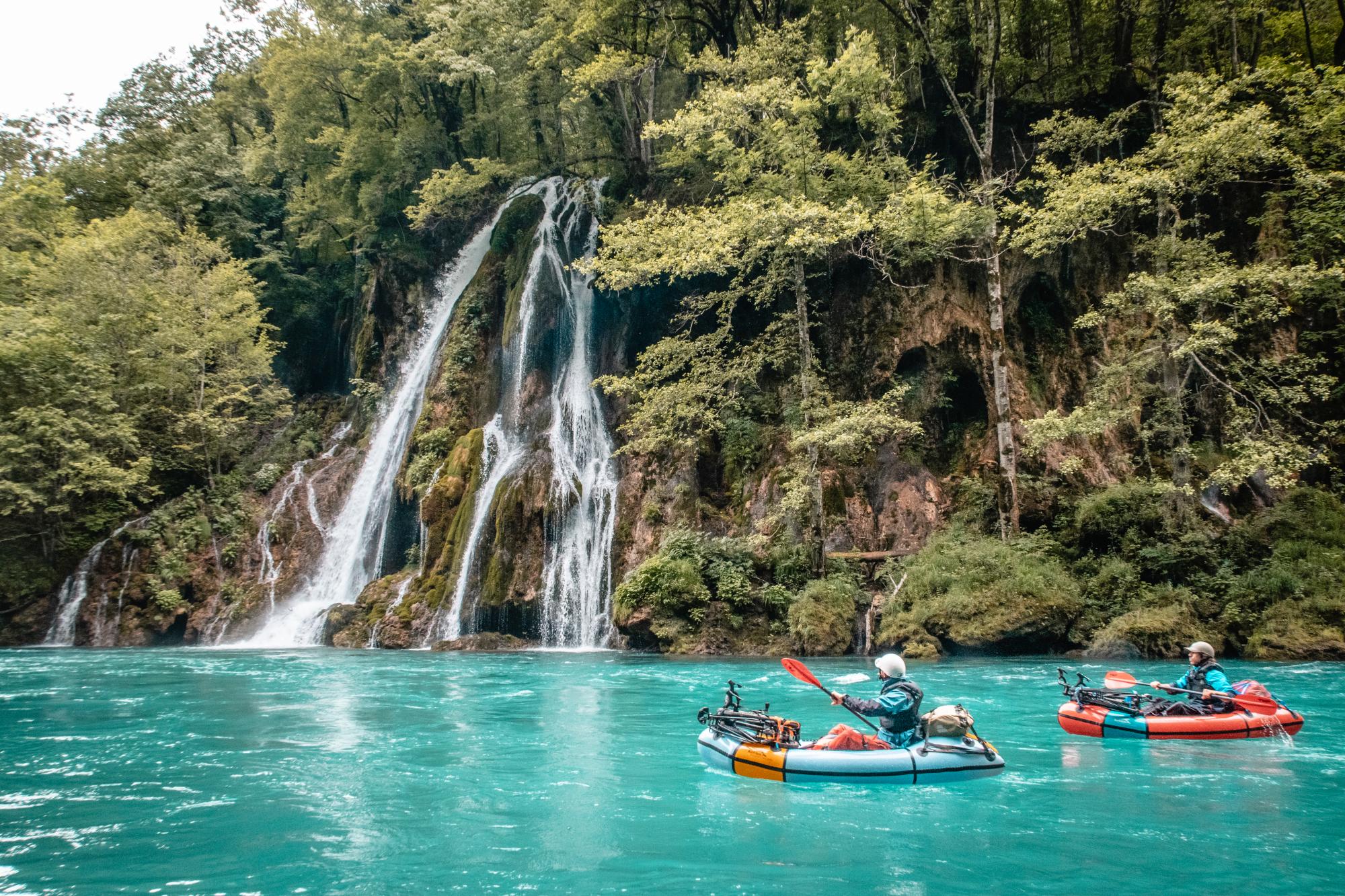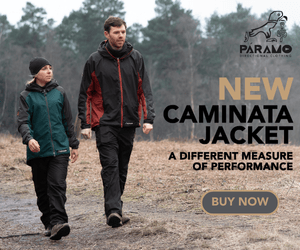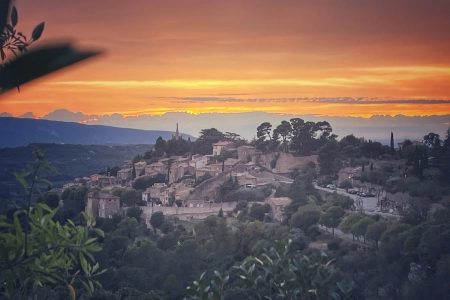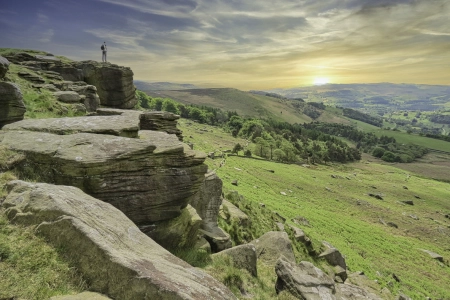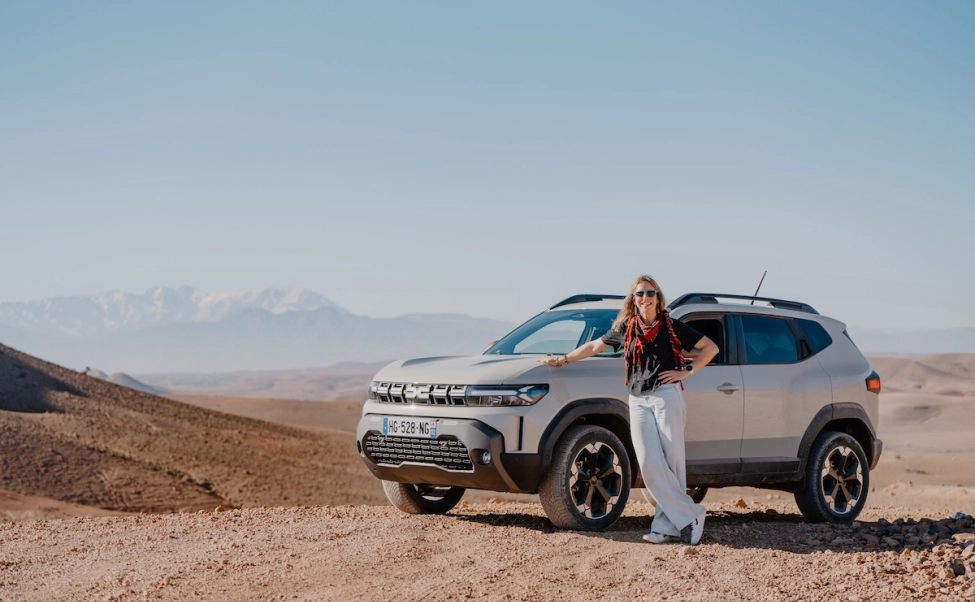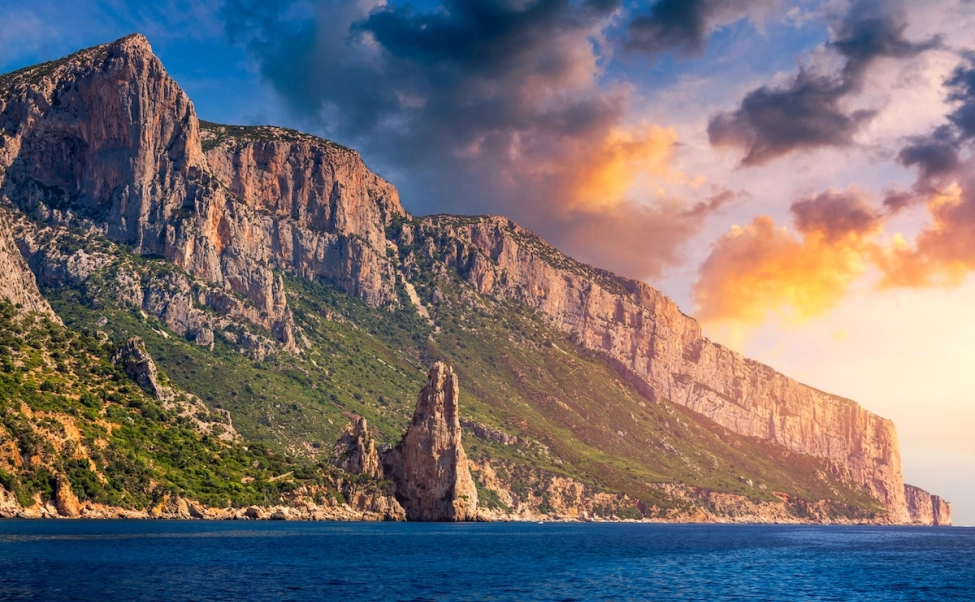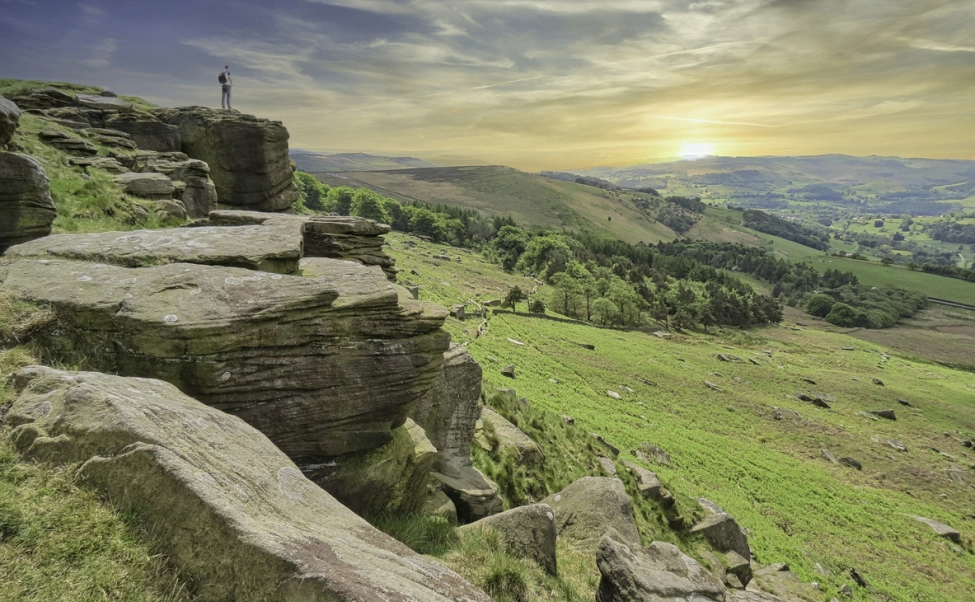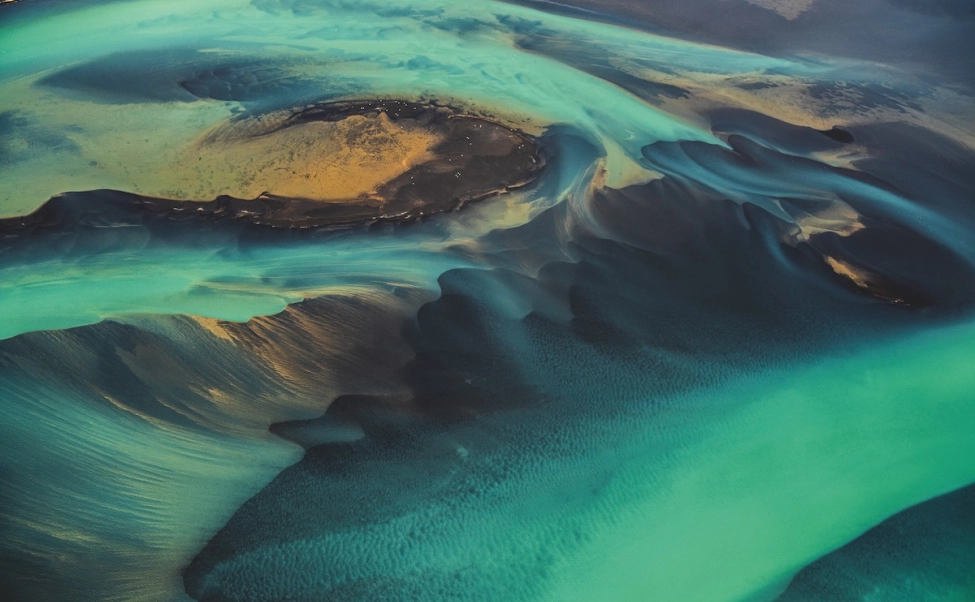- Details
- Written by: Gerhard Czerner
Cautiously, I tighten the straps that are supposed to keep the wheels and frame of my gravel bike secured to the raft for the next few days. “The handlebar is really pressing into the rubber there,” my friend Xaver Frieser points out, looking skeptical. But his own setup doesn’t look much better. It’s important we get this right—we’re about to try and paddle down the Tara River in Montenegro, through the deepest gorge in Europe. It has been raining heavily in the lead up to our trip, and while the water isn’t the impassable torrent it was a few weeks ago, the rapids we’re facing will be fierce.
We know we should be trying to follow the basic rule of loading boats, keeping the centre of gravity low, so that our small rubber dinghies—known as packrafts—won’t capsize on first contact with whitewater. Unfortunately, it’s utterly impossible. Whichever way we pack them, the bike and bags look like they’re way too high. It feels like the final stages of a game of Tetris, where the bricks keep piling up in a wobbly, mismatched stack. And so, with a sigh, we both undo our heavy kit, and start strapping it up again—and not for the last time.
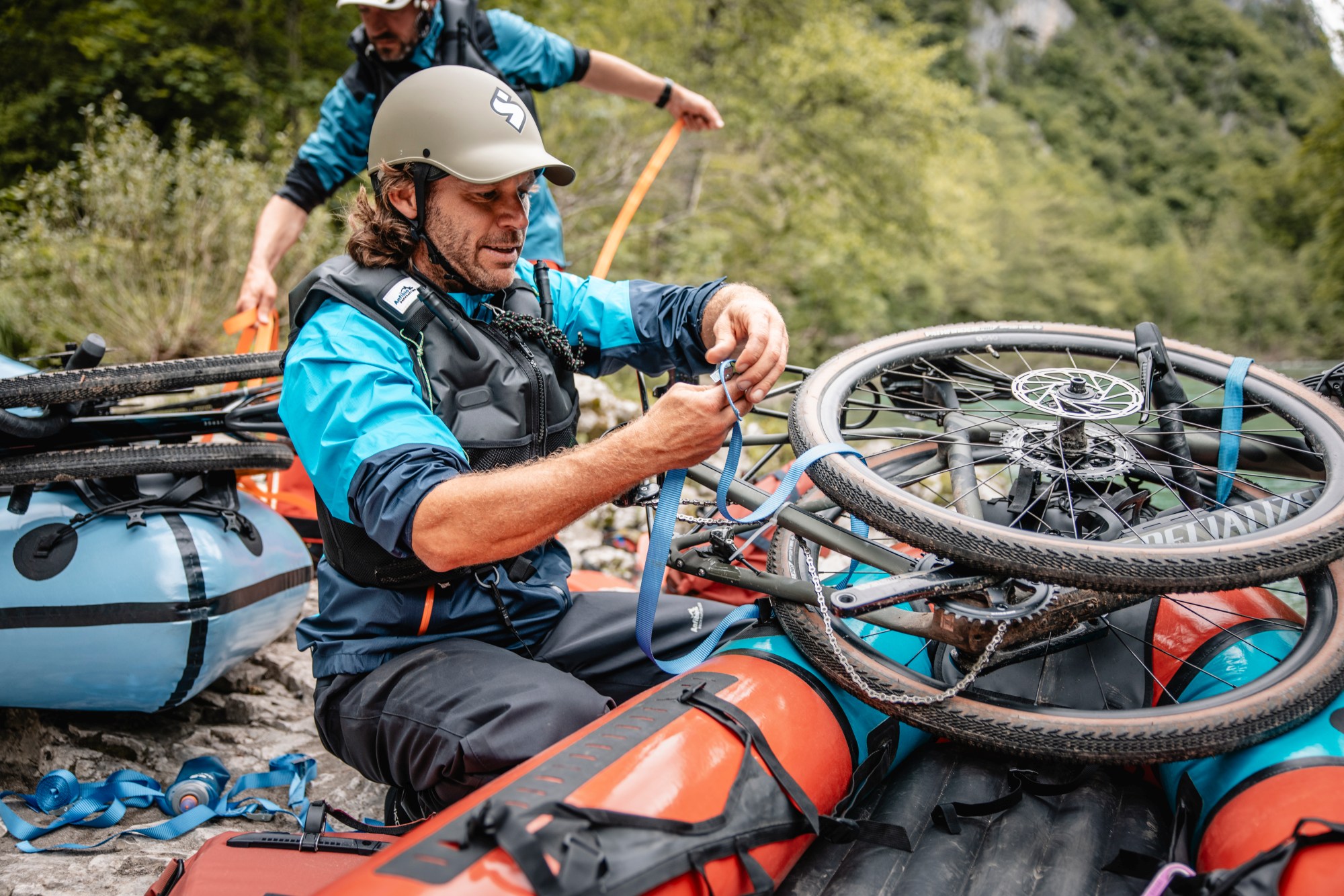
This expedition looked a lot easier on paper. Packrafts are a pretty simple idea—small rubber boats for one or two people, which can be folded down to an incredibly compact size, so they can fit in a backpack. Weighing roughly 2.5kg, our Anfibio Revo XL boats measure 2.47m long and 92cm across when inflated, but pack down to just 35 × 25cm. Initially designed for trekkers to cross calm bodies of water like lakes and fjords, packrafts have developed in recent years.
And these ones, its claimed, are capable of tackling serious whitewater. I’m first and foremost a pedaller, rather than a paddler, however. The thing that interested me most about these new-style packrafts was the idea that they could be combined with gravel bikes to create the ultimate, multi-discipline adventure: bikerafting. My friend Xaver—an accomplished kayaker as well as a fellow bike enthusiast—was similarly excited by the prospect, as was Martin Bissig, our photographer. It didn’t take long for the three of us to decide on a destination.
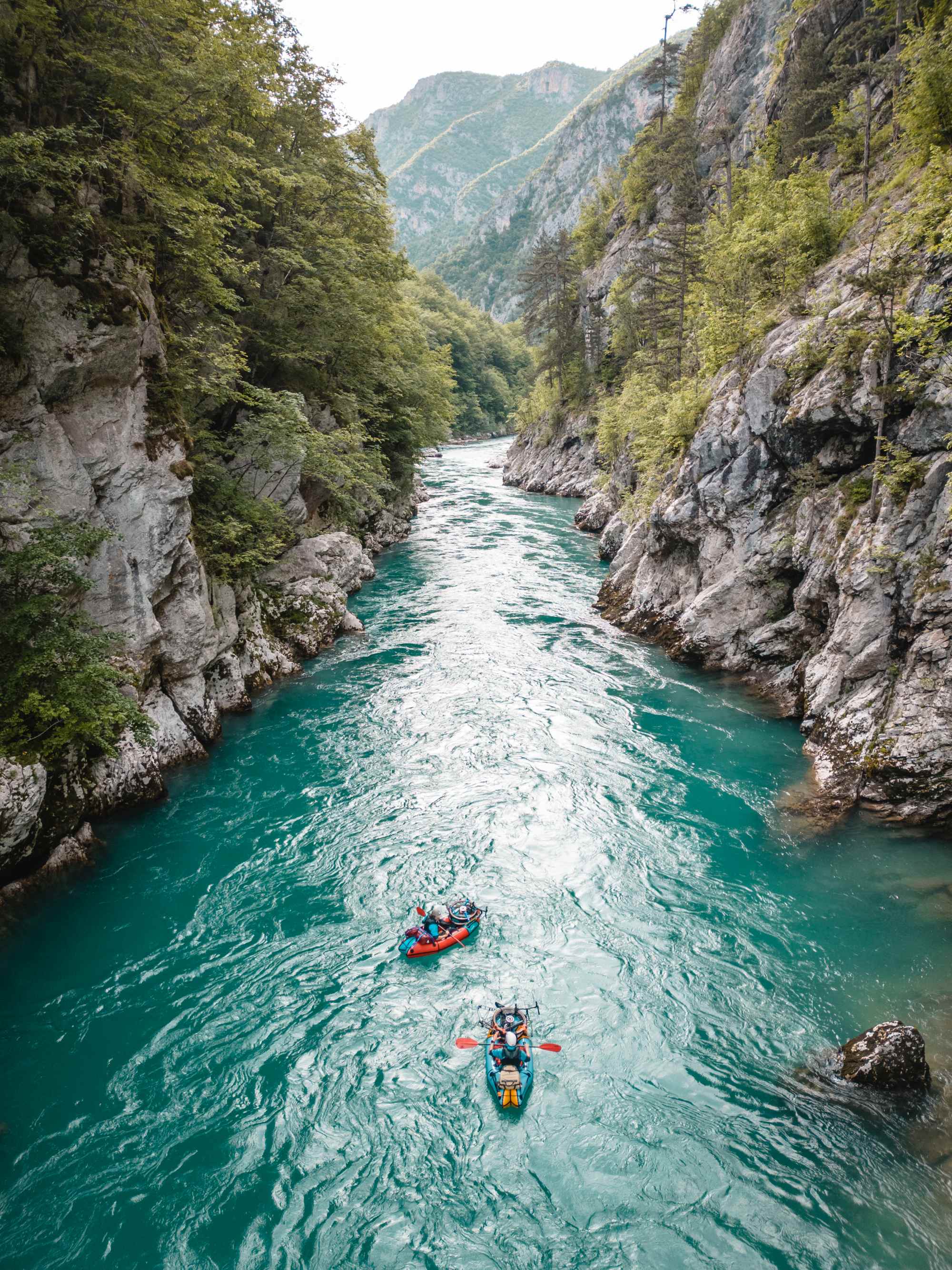
“The Tara is a genuine natural wonder, featuring the longest river canyon in Europe”
Known as “The Tear of Europe,” thanks to its crystal-clear waters, the Tara River in Montenegro is a genuine natural wonder. It’s the third longest canyon in the world after the Grand Canyon and Namibia’s Fish River canyon, with limestone walls that stretch up over 1,300m high at their highest point. Despite its status as a UNESCO World Heritage site—and its niche popularity with a certain type of extreme kayaker—it’s not much known outside the Balkans.
With dirt-friendly gravel bikes and river-running packrafts, I worked out we could do a massive loop. In three to four days, we would be able to cross the beautiful Durmitor National Park, founded in 1952, on our bikes—pedalling from the Tara Gorge exit to the put-in, at the top of the canyon. Then, in another two days, we’d paddle back downstream. There was just one problem—despite our combined biking and kayaking experience, neither of us had ever actually been bikerafting before.
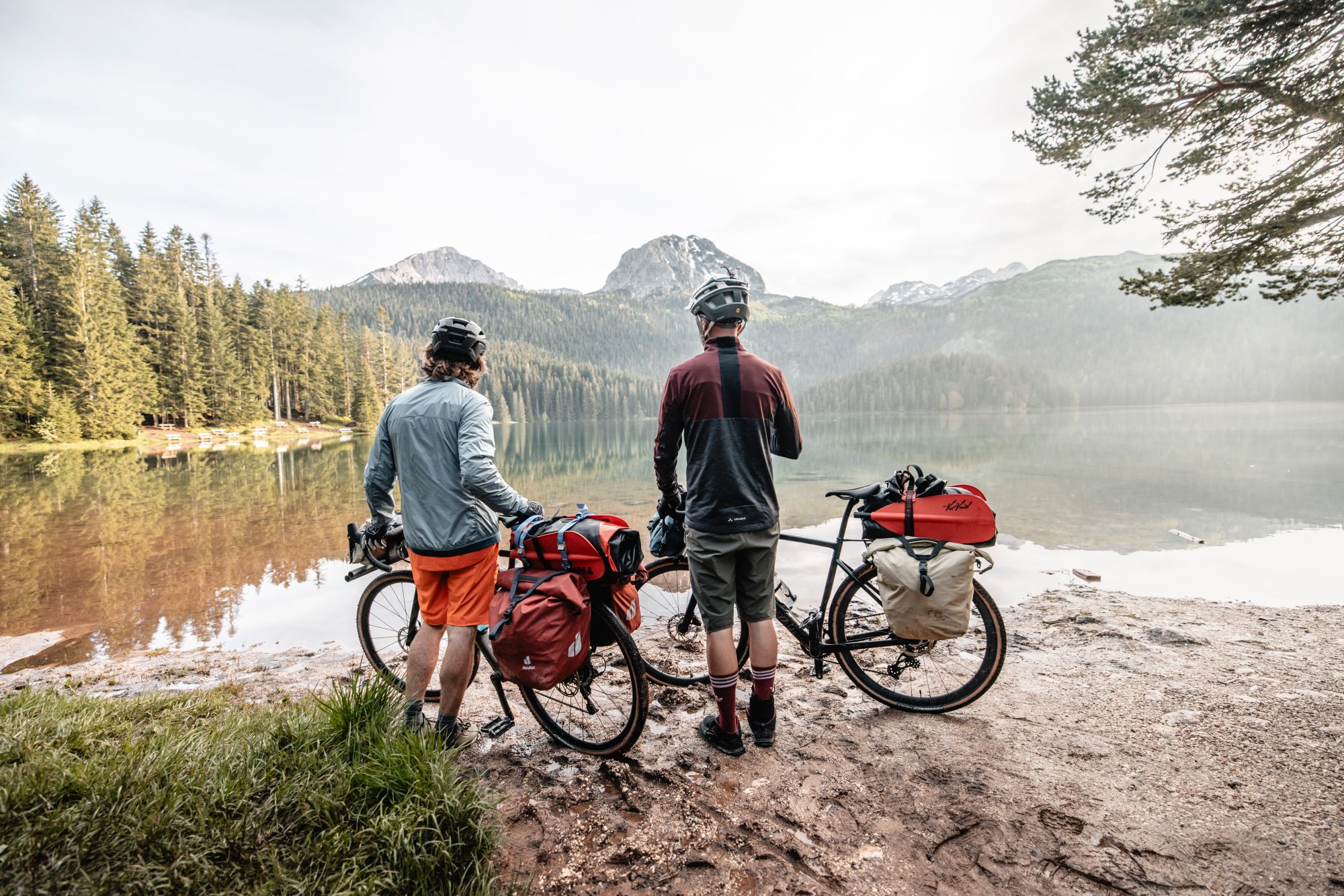
Thankfully, we’ve opted to link up with a local who has some experience in the area. Miljko ‘Gigo’ Bulajić is waiting for us on arrival in Podgorica, the capital of Montenegro. An enthusiastic kayaker who founded the tour agency Balkan Expeditions, he’s tall, tanned, fit, and up for supporting hair-brained schemes like ours. “Welcome to Montenegro, let’s head to the car and drive to the camp,” he says. We don’t have to ask which car—it’s the only battered, sticker-covered VW Transporter in the lot, and has a kayak proudly mounted on the roof rack.
After about three hours, we reach Camp Grab, nestled on the banks of the Tara and named for the oak trees (or “grab trees,” in Montenegrin) that surround it. After dinner, we head down a wooden staircase right to the river bank. The turquoise water shines in the half light. “It looks different to the muddy floods of the past few weeks,” I say to Xaver. “Yes, the water level is perfect,” Gigo says. “The last kilometres are ‘sporty,’ but you guys will manage.” He’s grinning as he says it, and I find myself wishing I felt quite as sure.

Bears, Bosnia & battling uphill
It’s a pleasant surprise when everything fits into our frame bags the following morning. But the bikes do feel heavy, and are difficult to maneuver on the rough gravel, especially as we’re setting off uphill. “This is going to be fun,” I gasp to Xaver, after half an hour of tough pedalling with a bit of pushing in between. He just nods in response. Higher up, however, the forest road improves, and the view suddenly opens up. We can see the Tara river gorge, with the bright blue strip of the river running through.
On the other bank is Bosnia. Gigo told us that the area is home to many bears, which sounds very plausible, given how deserted it feels. In the high summer, it’s apparently possible to stay overnight up here on the Piva Plateau.
But now, in early June, everything looks closed. With dusk approaching, we decide to stop. Xaver sets up the tent, while I gather wood. Soon, we’re sitting in a meadow dotted with buttercups, cooking pasta by the fire, chatting excitedly about the journey ahead.
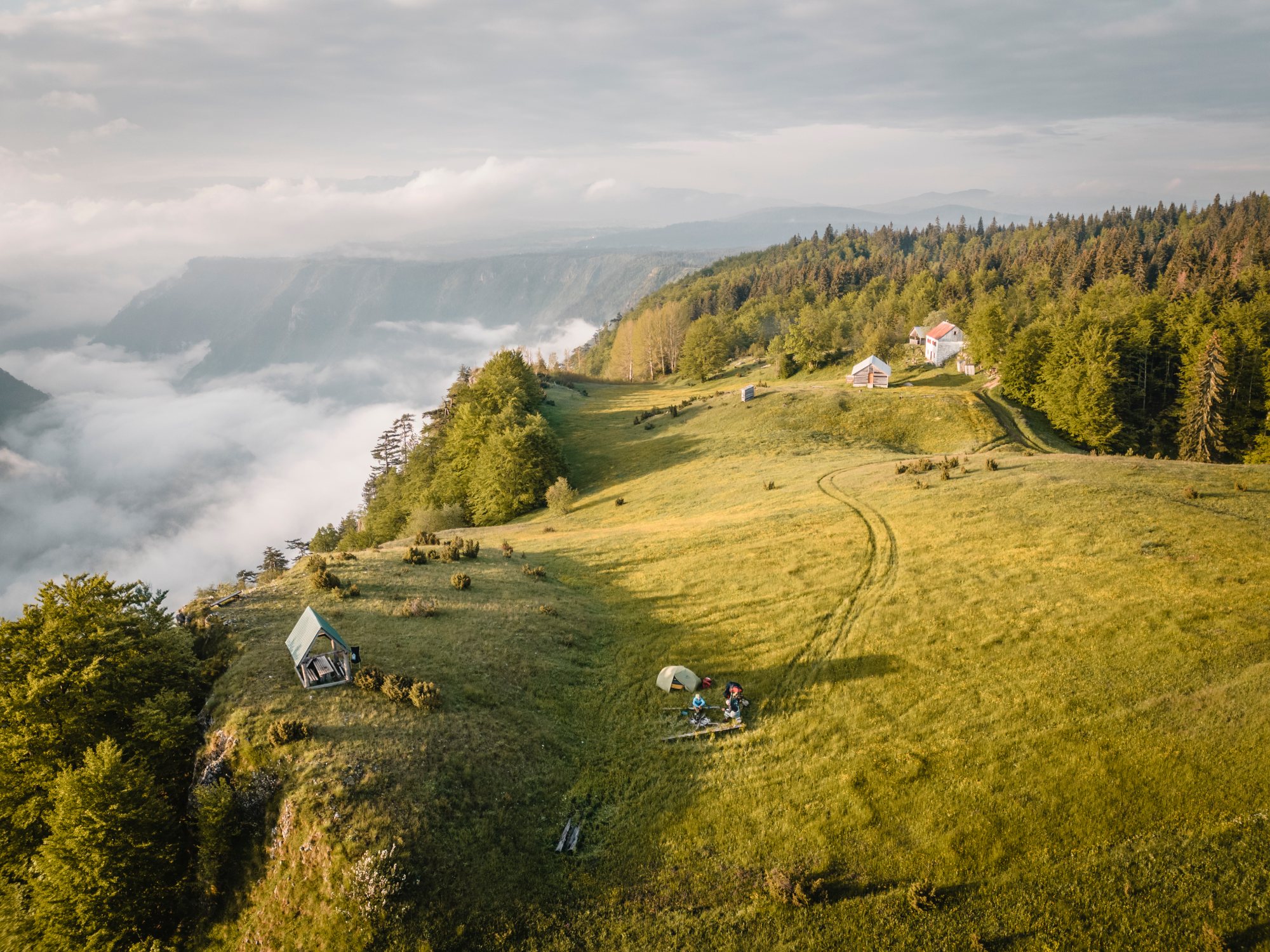
We reach the borders of the Durmitor National Park the following day. After winding through meadows of fragrant flowers, we suddenly find ourselves climbing into a world of rugged mountains, as the landscape transitions from “charming” to “barren”. Limestone cliffs line the road, with remnants of snow sticking to the walls. The mighty 2,393-meter-high Prutaš Peak looms over us. At one point we encounter walls of snow over two metres high—remnants of the last harsh winter. Our bikes, laden with paddle boats, seem somewhat out of place here.
“Aside from a few motorcyclists and the occasional car, we encounter no-one”
A few motorcyclists and the occasional car pass by, but otherwise we encounter no one. It starts to rain and on our descent to Žabljak, our next overnight stop, we get thoroughly soaked. The prospect of trying to dry our sopping kit in an equally wet tent doesn’t really appeal, so we check into a small hotel, and treat ourselves to a steaming hot plate of Kacamak—a kind of salty maize porridge that’s a specialty of Montenegro’s mountain regions. Nearly 60 kilometers and 1,500 meters of elevation are behind us, but we’re still not done with the bikes just yet.
The early morning sun bathes Žabljak in soft light as we depart accompanied by a soundtrack of unseen birds chirping in the surrounding fields. We pedal past the Savin Kuk ski resort, consisting of two lifts, and out of the town. At the roadside, small huts offer local products for sale: wine, Šljivovica (a kind of plum brandy), nuts soaked in honey, and souvenirs. Unfortunately, our space is limited, but the jars of nuts and fruits soaked in honey look like such good trail food that we simply have to buy one, and cram it in.
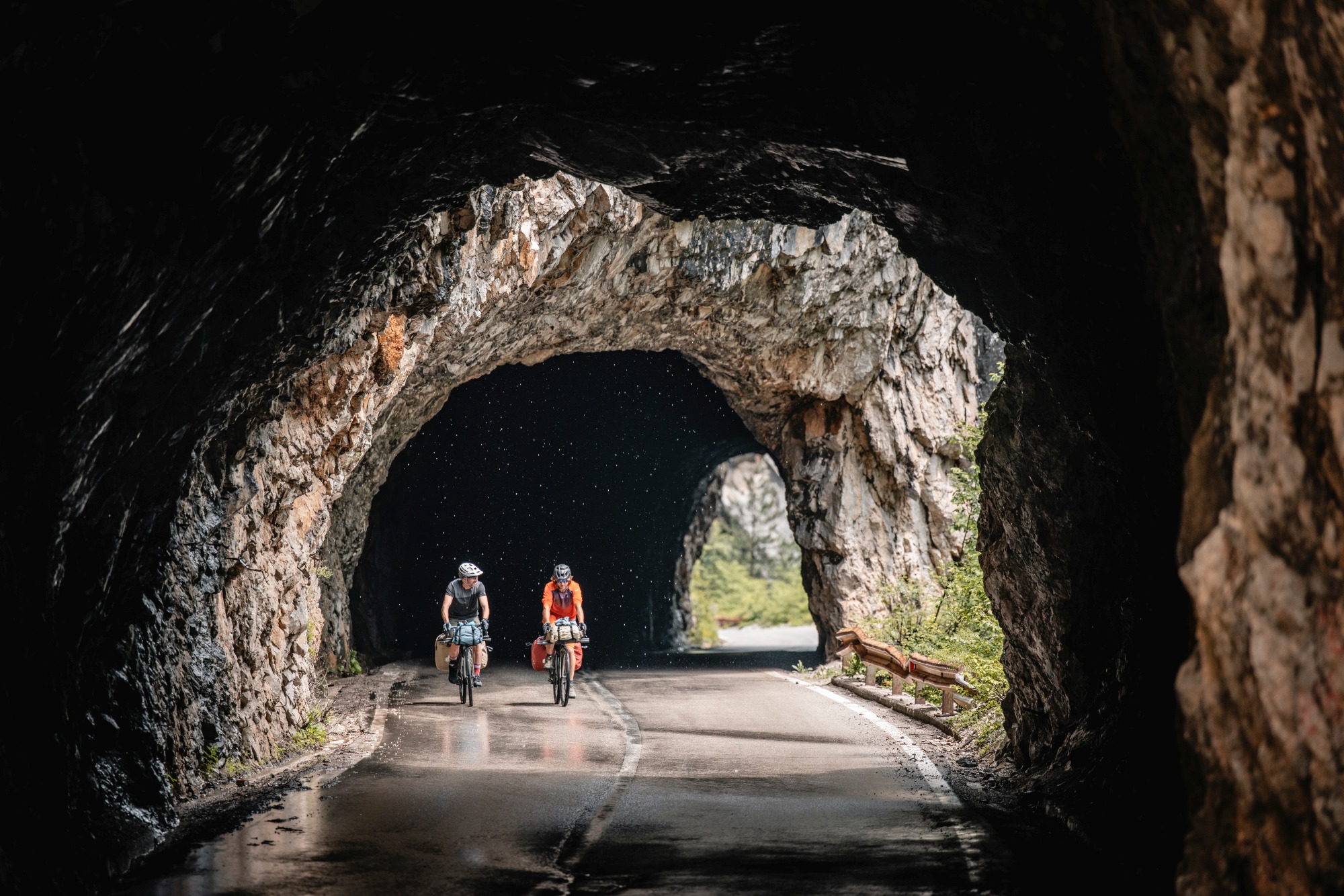
We race down the main road for 10 kilometres. The fully-loaded bikes wobble at high speeds, but our excitement about getting to the Tara gorge is too great to slow down. Almost simultaneously, we spot a huge arch spanning the valley below. The atmosphere at the Đurđevića Tara Bridge is entirely incongruous given what we’ve ridden through so far. It’s like an amusement park: bars, loud music blaring from speakers, vendors selling tacky souvenirs and countless companies offering rafting and canyoning tours in small booths. There’s even a 1,050-meter-long zip line across the gorge, if you fancy it. We don’t, and having paid our 55 euros—the mandatory fee for navigating the gorge by kayak—we swifty descend to the relative tranquility of the river’s edge.
It’s here that the game of Tetris begins, and I start to curse every bit of kit I’ve brought—even that small jar of honey! Finally, after more than an hour of unloading panniers, removing wheels, swapping bike shorts for life jackets, stowing food, packing, unpacking, and repacking again, we’re ready to launch. The Tara isn’t a sluggish river; it offers rapids that are class three on the six-point whitewater scale. It’s not long before the limestone walls start closing in, and we hear the roar of the first major turbulence ahead. From an eddy behind a rock, we try to get a lay of the land—or rather, the water.

Whitewater & white knuckle thrills
As an experienced expedition paddler, Xaver instantly spots the line, and we follow him nervously out into the main current. Large waves and rollers demand precise paddle strokes, and I’m concentrating hard. But I’m thrilled by how responsive my packraft is, remaining stable in the water, despite the load.
“Incredible, it’s running perfectly,” I shout to Xaver, once we’re past the worst of it. “I thought these packrafts were just toys, but they’re really impressive.”
With our rafts having passed the acid test, the river now opens up ahead of us. The next stretch is 78 kilometres of calmer water, punctuated by the occasional rapids, which we plan to cover in two days. We pick our campsite on sight, paddling up to a secluded river bank and rushing to light a fire so we can dry out and warm up quickly. Nights by the river are always special to me. But here, miles from civilization, and surrounded only by the sound of rushing water, I feel transported to another world.
Sunshine greets us the following morning. The water sparkles crystal clear and deep blue in the light. Coffee steams on the stove. Today’s route starts off with a leisurely paddle, allowing us to enjoy the magnificent landscape. “That’s where we camped a few days ago,” Xaver says at one point, picking out the spot where we first looked into the gorge at the beginning of our bike tour. The final 18 kilometres of the gorge are the most technical part of our route.

Known as the “adrenaline” section, they feature twenty-one challenging rapids, arranged in a sequence so demanding that it was chosen to host the World Rafting Championships in 2009. We enter with a 15 metre gap between us, but pretty soon the waves are so high that Xaver disappears completely from my view. By the time he reappears, I’m in the trough of the wave, and he’s lost behind the next one. The power of the water is immense. The punishment it doles out to our arms, not to mention the boats, is intense. It’s truly a wild ride—the ultimate test not just of the packrafts, but of the way we’ve packed them.
Just at the point where I feel like my arms are about to fall off, Xaver spots the terrace of Camp Grab. Gratefully, we paddle out of the current to the put out and, still full of adrenaline, embrace on the sandy beach. “It couldn’t have been much tougher. That was insane,” I say, overwhelmed by the last few kilometres we’ve come through. “You were right Gigo,” Xaver says, when our host greets us grinning. “That was very ‘sporty.’” We’re exhausted but triumphant—our feeling of success bolstered when Gigo tells us that, at least as far as he knows, we’re the first to ever bikeraft the route.
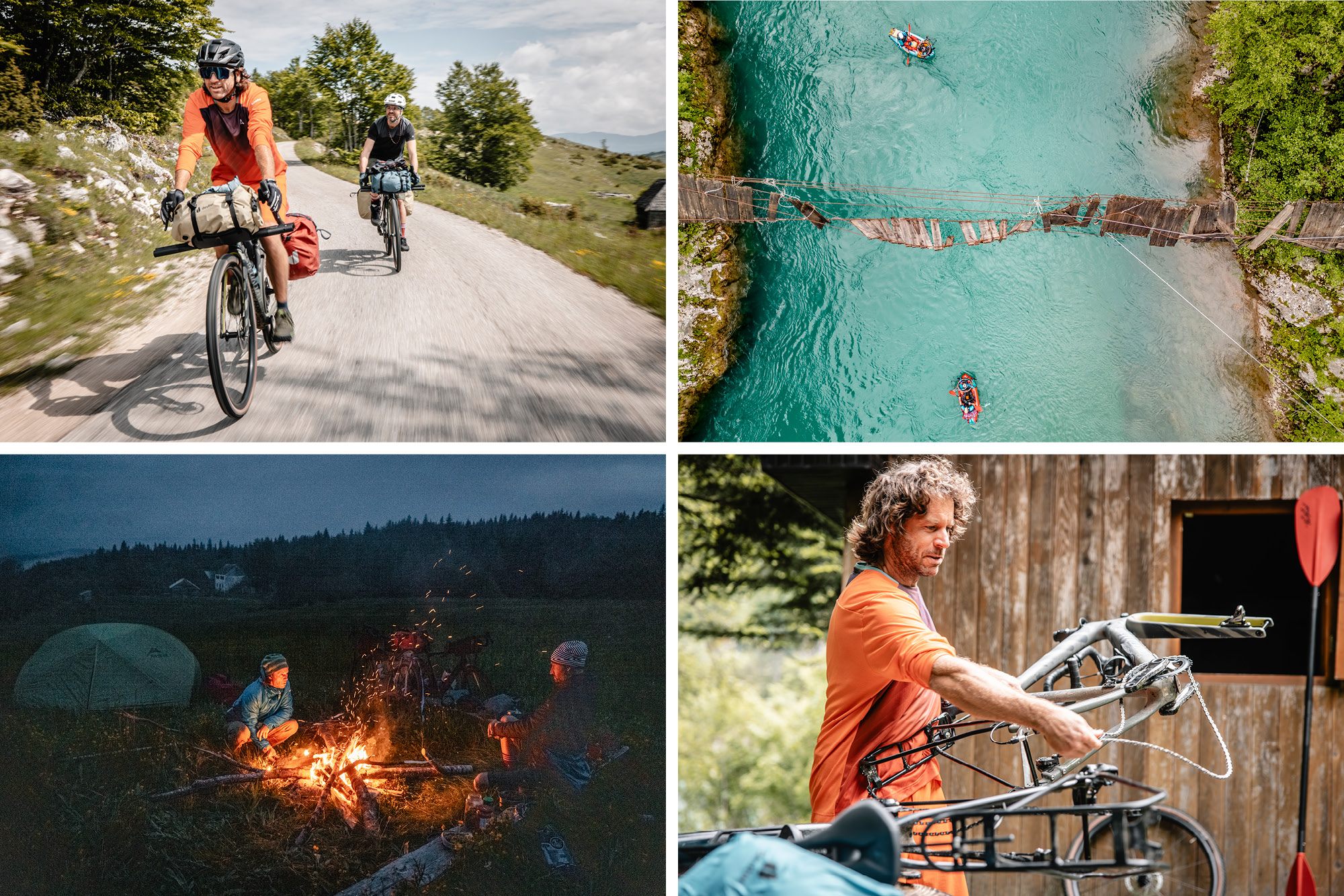
“As far as anyone knows, we’re the first people ever to bikeraft the route”
That night, we celebrate. It’s been an amazing adventure. This combination—of transport types, equipment, personalities, and location—has worked incredibly well. This won’t be the last time I come to Montenegro, and it definitely won’t be the last time I travel with bike and boat. There’s still more torturous packing ahead of us—we have to get the boats back onto the bikes, because we want to pedal to the Piva monastery before we fly home, and then, of course, we have to take everything apart at the airport. But for now, all of that can wait.

Knowhow
Our trip
Gerhard & Martin’s trip was supported by Montenegro Tourism, whose website offers travel tips and booking advice.
Getting there
Both Ryanair & WizzAir fly non-stop from London (Stansted and Gatwick, respectively) to Podgorica, Montenegro’s capital.
Guides & Route
Balkan Expeditions offer guided hiking, rafting, kayaking and packrafting tours all over the country, as well as ski touring expeditions in winter. Miljko ‘Gigo’ Bulajić is an expert guide, with an encyclopedic knowledge of the best spots.

